How to keep flies off horses: 6 strategies to prevent attack from all angles
Keep your horse comfortable with this range of products and strategies to keep insects away
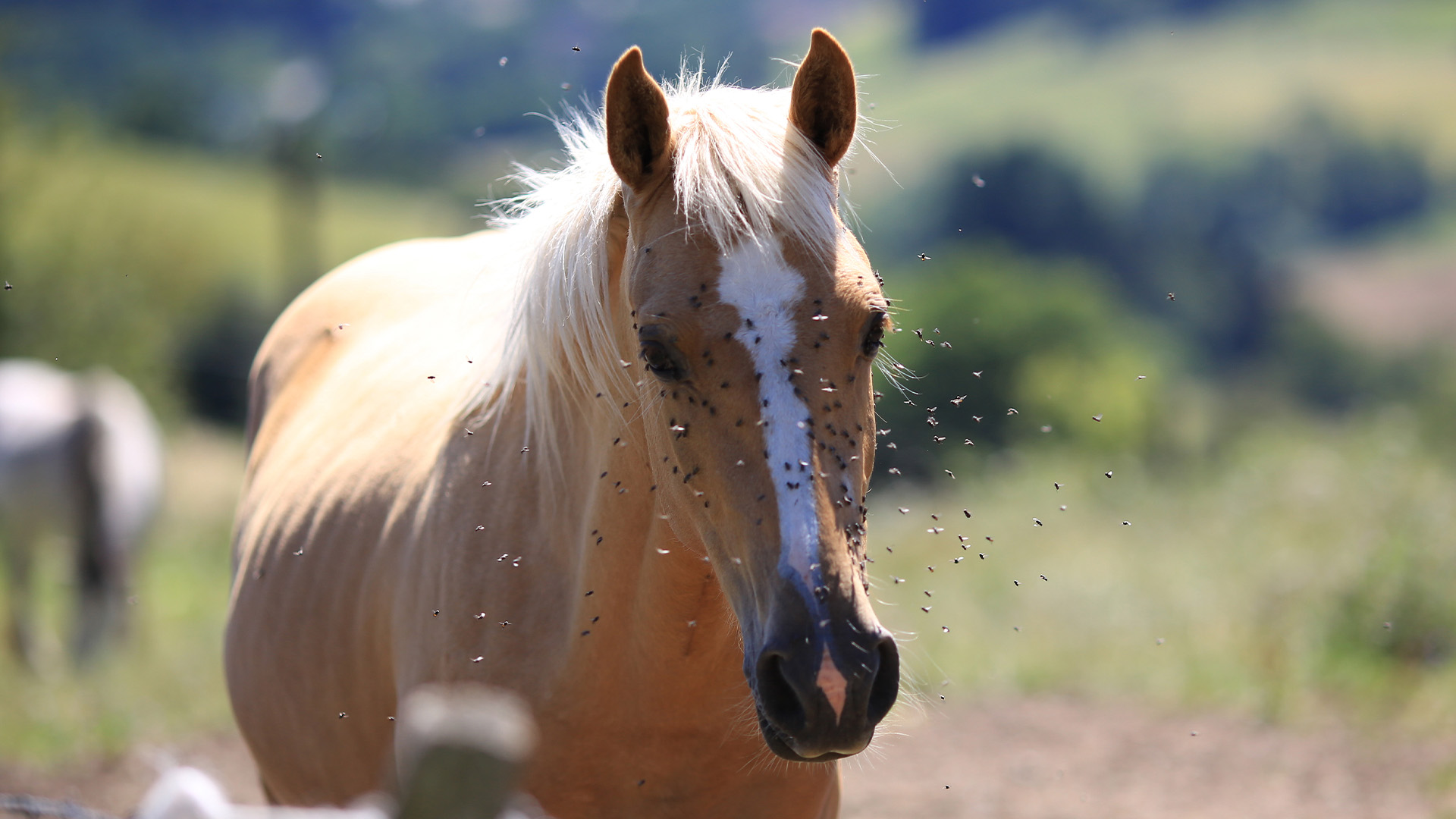
Keeping flies off horses is a worry that plagues many horse owners in the warmer months. No horse enjoys being bothered by flies, and while they are mostly a nuisance, they can also present health risks. It’s important to be aware of these risks, and the best strategies to protect your horse from flies.
There are plenty of ways to do this, from gear such as the best fly sheets and fly masks to products like the best fly repellent sprays and creams, but what’s right for you and your horse?
Most owners find a combination of strategies helpful – keep reading to find out more about each one to decide what would best suit you.
How to keep flies off horses
There are plenty of different ways to keep flies off horses, with pros and cons to each. Here are the six best strategies:
1. Fly spray
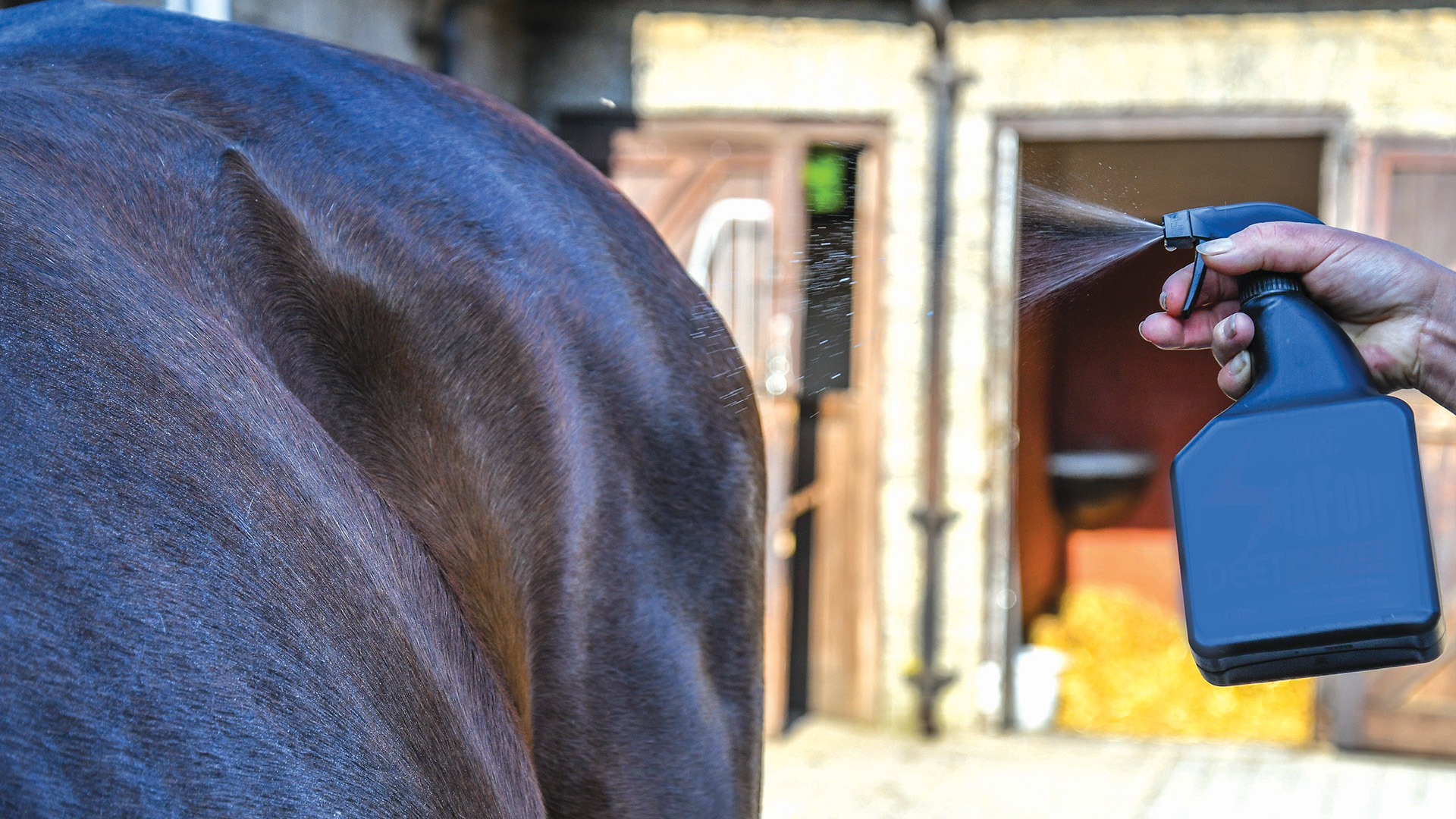
Fly spray, also known as fly repellent, is an insect spray that can be applied to the horse’s body to deter flies from landing on them. The best fly sprays for horses are the ones designed for them; it’s best not to use insecticides that haven’t been developed with horses in mind, as these may contain irritants. Fly sprays are the most popular choice for to keep flies off horses.
Advantages of fly sprays
✅ they are quick and easy to apply
✅ they can be cheap to purchase
✅ there are many available, and the variety of formulas and ingredients means you can find one that will work for your horse and environment with the type of flies present
Get the best advice, tips and top tech for your beloved Pets
Disadvantages of fly sprays
❌ they can carry a strong smell and the ingredients can be irritating for horses and owners sensitive skin
❌ some will wear off during the day, so top-ups may be required, particularly on hot days if your horse is sweating
❌ some horses don’t like the sensation of being sprayed or misted either. It’s possible to teach your horse to stand for fly spray, but this can be a lengthy process until they are completely comfortable, and even then, they may be reluctant to have certain parts of their body sprayed, such as their face or under their belly.
2. Fly gels and creams
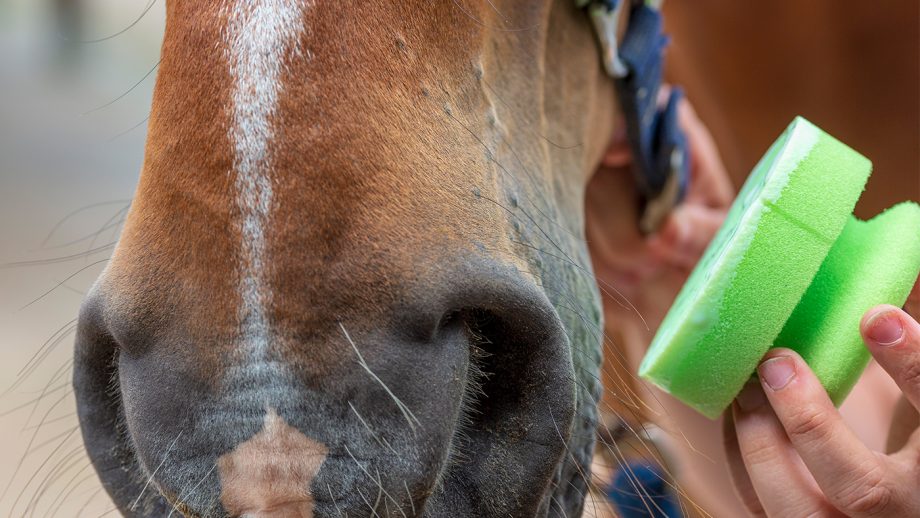
A great alternative to fly sprays, fly gels or creams are applied by hand or sponge to the horse’s body.
Advantages of fly gels and creams
✅ they are good for horse’s who are ticklish or dislike fly spray being applied
✅ they are great for targeted application, such as to the face or between the legs
✅ the consistency of the product often means it has a longer adherence, so can last the whole day – however, reapplication may be required, as with fly spray, when it’s hot
✅ some products are colored so it’s easy to see where they’ve been applied
Disadvantages of fly gels and creams
❌ they can be more expensive
❌ they are easy to over-apply as your horse doesn’t need to be covered in the same way as fly spray for the same level of protection
❌ they can be time consuming and harder to apply if you don’t opt for a roll-on or sponge-on option
3. Fly sheets
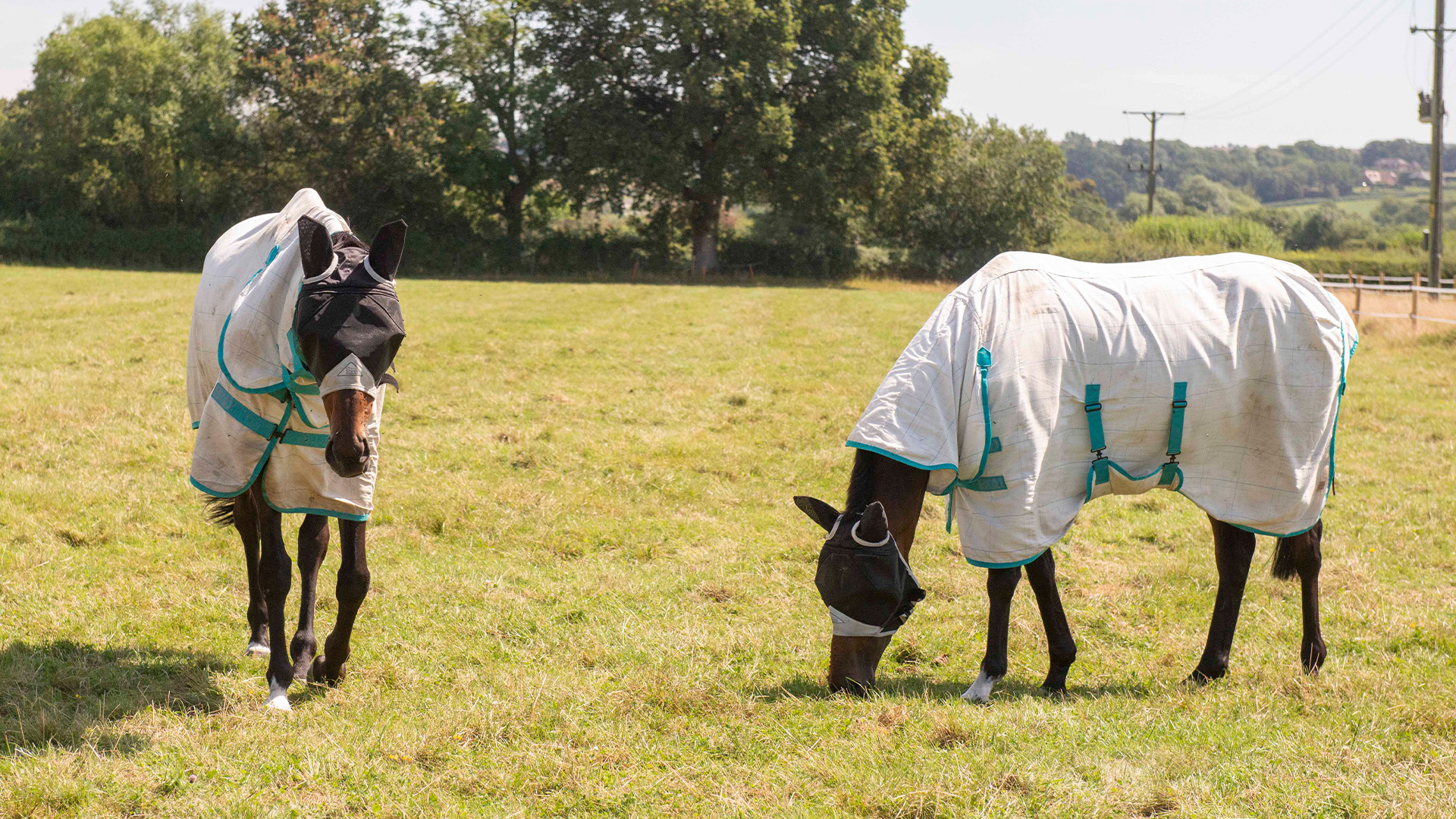
Fly sheets are lightweight, often mesh, blankets worn by horses to protect their body from flies. This piece of gear is often a staple in a horse’s wardrobe, and advances in design and technology means that the best fly sheets for horses often come with more features than simple fly protection.
Advantages of fly sheets
✅ they provide all-day protection that isn’t going anywhere
✅ they don’t contain chemicals or irritants
✅ white fly sheets can help reflect heat
✅ they can offer various levels of protection as required – those designed for sweet itch offer full body protection, including belly bands and neck covers that can even go over the ears
✅ they also offer UV protection
Disadvantages of fly sheets
❌ it’s important to ensure the correct fit to prevent any rubbing or sores, particularly on sensitive horses
❌ they are not comfortable for horses to wear in the rain, although you can purchase waterproof fly sheets for changeable weather
4. Fly masks
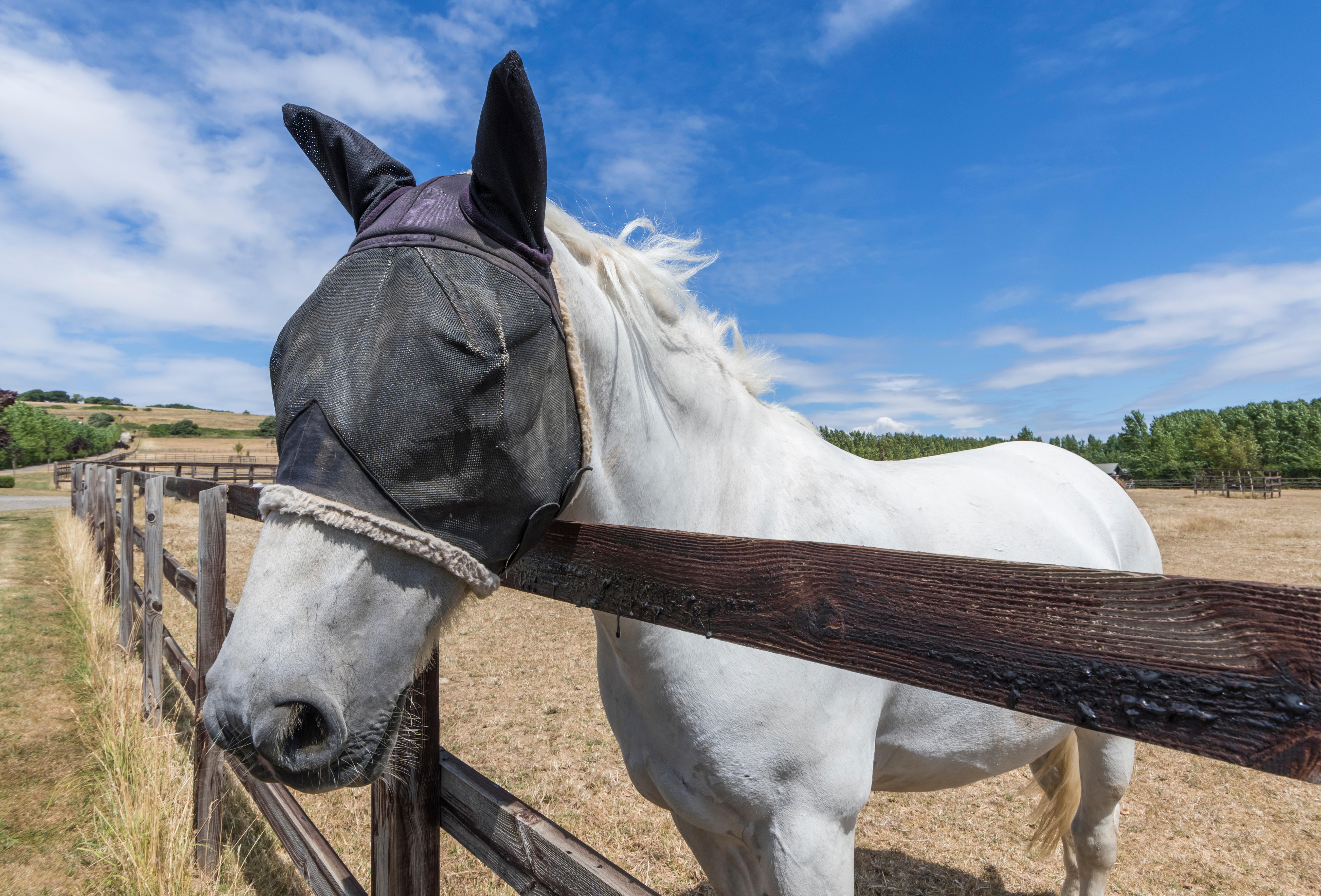
Fly masks are worn to protect the horse’s face. They come in a variety of styles and coverage options so you can select the best fly mask for your horse. The primary goal is to offer eye protection, as flies like to congregate around the eye.
Advantages of fly masks
✅ many now also offer UV protection, which is a must-have for horse owners concerned about eye health or have horses prone to uveitis
✅ you can get masks with or without ear covers and nose covers to suit your horse
✅ you can get masks that are pull-on or secured with Velcro that will help with putting on and taking off more easily
✅ Lycra style masks can be worn under halters and muzzles
Disadvantages of fly masks
❌ fly masks need to be properly fitted, or they could rub or irritate your horse
❌ some horses like to remove them
5. Fly boots
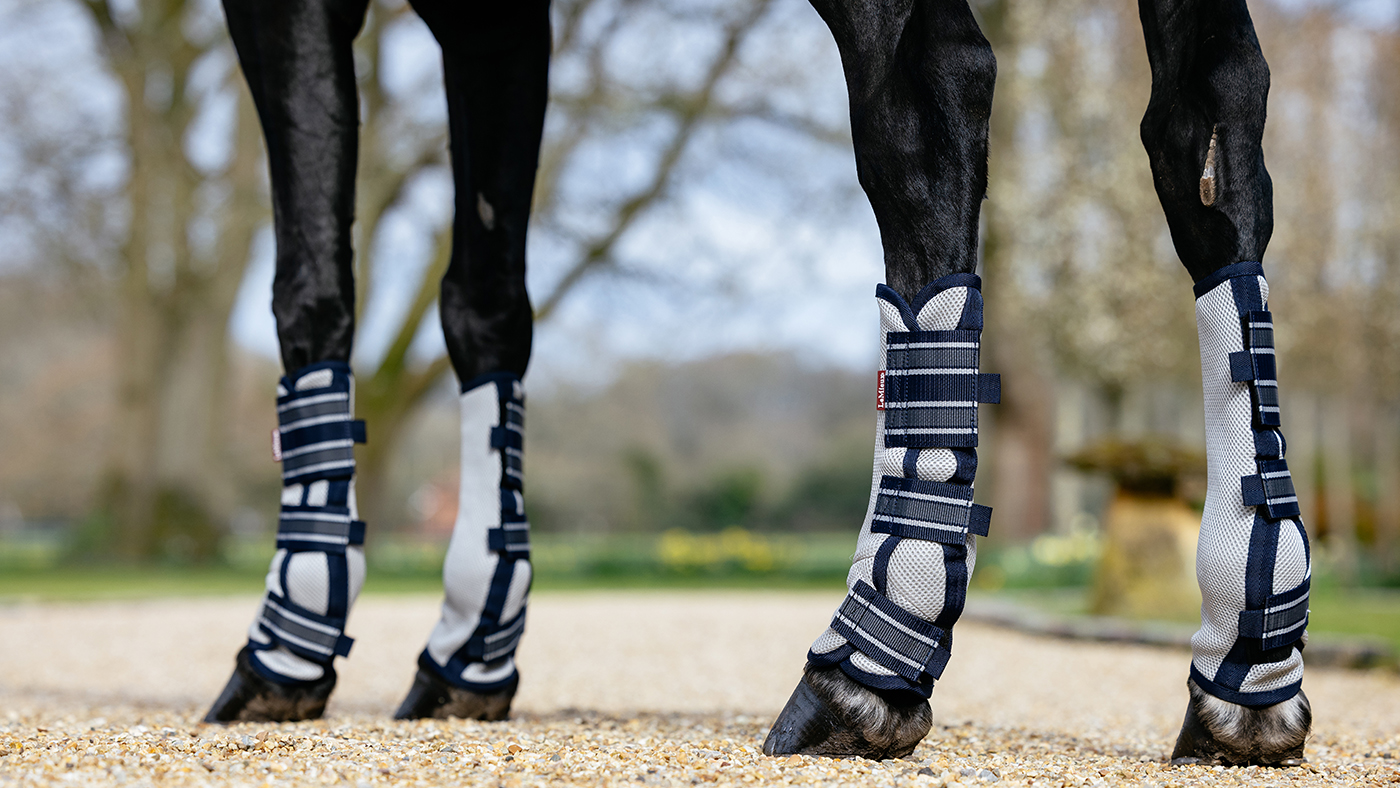
Fly boots protect the lower leg from fly irritation. They can be a great option if your horse stomps a lot when irritated by flies, as repetitive stomping can strain the legs.
It’s important that these are fitted correctly so they don’t rub or slip during wear, and monitor use on hot days where the leg could become overheated. The best fly boots for horses are often made with ventilated or breathable materials, opposed to protective materials like brushing boots made for exercise.
6. Things for the stable
Stables can become a hub of insect activity, but this can be mitigated to make both yours and your horse’s time in the stables more comfortable.
Fly traps and sticky paper
These catch flies, and need to be disposed of and replaced semi-regularly. When selecting a fly trap to go in a stable, only use a sticky or baited trap (like this one on Amazon), not an electric trap, and make sure it’s hung safely away from the horse.
Fans
Flies struggle to land in moving air, so a breeze can help to deter them, as well as having the added bonus of keeping you and your horse cool! You can buy rechargeable ones that clip up in stables that can also be used while transporting (like this one).
Mesh screens or fringe curtains
Where possible, put up fringe curtains or mesh screens (like this one on Amazon) on windows and doors. This blocks flies from entering areas, while still allowing for airflow. Fringe curtains are an option for stable doors if your horse is particularly bothered by flies, as it allows them to still look out; however, they must be trained and desensitised to use these safely.
Stable management shouldn’t be overlooked when it comes to controlling fly populations. Muck out daily or twice daily, depending on how much time your horse spends stabled, to remove manure and wet bedding. Position your muck heap away from your stables, as flies breed in manure. You should also use covered bins to store feed and clean water buckets or troughs regularly to avoid attracting insects.
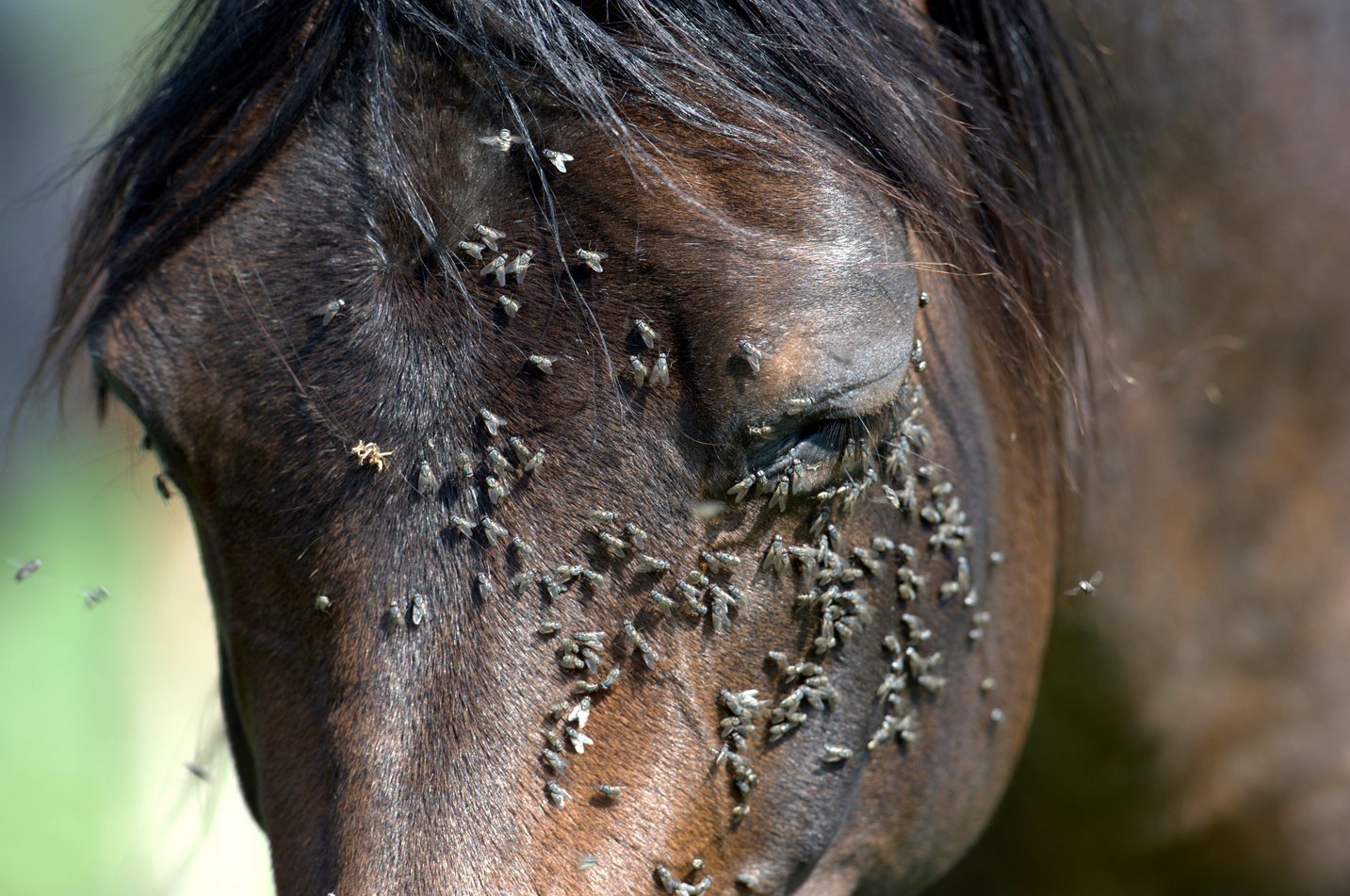
Why it's important to keep flies off horses
Whilst in most cases, flies are just irritating pests, they can also cause health problems.
There are two main categories of flies: biting flies and non-biting flies. Biting flies feed on animal blood, while non-biting flies feed on bodily secretions, such as saliva, tears or mucus.
“Flies, gnats, mosquitoes, and other biting insects are more than just annoying for your horses; they can cause and carry many diseases, some of which can be very serious or even fatal,” says vet Dr Lisa Coder.
1. Potomac horse fever
“If your horse lives near water, several insects such as mayflies, caddisflies, and damselflies can carry potomac horse fever,” says Dr Coder. “This disease can cause colic, abortions in pregnant mares, and diarrhea, which, if left untreated, may be fatal.”
2. Pigeon fever
“Another serious disease that can be spread by many types of flies is pigeon fever, or dryland distemper, which usually causes large abscesses to form. The bacteria is found in the soil and can be picked up by flies and transmitted to your horse,” explains Dr Coder.
“Frequently, the effects are external, but multiple internal abscesses or even inflammation of the intestines can occur. Horses often have high fevers, go off feed, or even present with lameness.”
3. Equine infectious anemia
“Deer flies and horse flies can transmit equine infectious anemia [EIA], which is a fatal disease for many horses. It has no treatment or vaccine,” says Dr Coder. “It can cause fever, weight loss, icterus [yellowing of body tissues], anemia, swelling in the limbs, and weakness, but often shows no signs until the disease has progressed to a deadly stage.”
4. Vesicular stomatitis
“Vesicular stomatitis is a disease of the mouth, tongue, coronary band, and mucous membranes. The virus is often carried by biting flies such as biting midges, sand flies, or black flies. Biting flies can also cause blisters, sores, and pain in the affected areas,” says Dr Coder. “Horses affected by vesicular stomatitis must be strictly quarantined, as the fluid in the blisters is highly contagious once they break open.
“Although rarely fatal, horses may have high fevers, lameness, and go off feed or water.”
5. Summer sores
“Summer sores are caused by the larvae of the Habronema worm [stomach worm], which are carried and transmitted by stable flies and house flies,” says Dr Coder.
“Summer sores are commonly large, non-healing wounds that can be difficult to treat. These can occur anywhere on your horse, but are most commonly found near the mouth, eyes, or genital area. Deworming can control the larvae, but the sores are usually slow to heal and extremely itchy.”
6. Fly strike
Also known as myiasis, fly strike occurs when fly larvae (maggots) grow inside the host, usually the skin, and feed on the tissue as they develop. Horses are typically at risk of this when they have an open cut or wound that flies can reach to lay eggs in.
Clinical signs include lethargy, a bad smell, and noticing a wound or skin appearing to move as the maggots move under the skin; don’t forget to check your horse's legs and sheath. If you are concerned your horse has fly strike, you should call your vet immediately; the wound will need to be cleaned, the maggots removed, and antibiotics may be required.
7. Other conditions
“Many other flies can cause dermatitis, itching, hair loss, or even lead to more severe allergies when horses are chronically exposed,” says Dr Coder.
“Keeping flies off of horses will lead to prevention of mild to serious diseases as well as decrease stress and increase comfort for your horse.”
Mel Beale is a freelance writer, photographer, and content creator with a lifelong passion for horses. She holds a 1st class degree in Equine Sports Science from Nottingham Trent University and has built a diverse career both in the saddle and behind the scenes.
From managing a successful livery yard in the UK to working around the globe – including time as a horseback safari guide in South Africa and as a work rider in Japan – and writing for Your Horse magazine, she has built up a wealth of equine experience.
Now based in the UK, Mel shares life with sport horse Romeo, whom she’s owned for over a decade, and former racehorse Alfie, whom she’s retraining. She’s passionate about equine welfare, behaviour and helping owners and riders to better understand and care for their horses.
